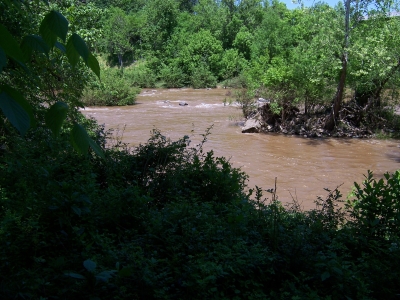The 17th crossed the Rapidan River in the early morning hours of April 30, 1863. The area of the crossing is seen in this 2008 photograph, but the description written by Lt. Albert H. Wilcoxson provides a vivid description:
“A wild and weird scene it was. Moving down the road to the abrupt bank of the river we came to the abutment where had been the old bridge, and where the rebels had lately begun the construction of the new. Here, dividing our ranks, each man groped for himself a way down the steep bank to the abutment, from which a rude and trembling structure, scarcely four feet wide, and but a trifle raised above the surface of the rushing and foaming river, led from one pier to another and so on to the opposite bank. The night was pitch dark, and, to enable us to avoid a tumble into the boiling flood, fires had been built on the piers, which lighted up the torturous course of the phantom like train as it slowly crawled out of the darkness on one side, across the flimsy bridge in the ruddy glare, and into the darkness beyond.”
Later in the day, at evening dress parade, the following order was read to the regiment:
“H’dqrs. Army of the Potomac
Camp near Falmouth, Va.
April 30, 1863
It is with heartfelt satisfaction the commanding general announces to the army that the operations of the last three days have determined that our enemy must either ingloriously fly, or come out from behind his defences and give us battle on our own ground, where certain destruction awaits him. The operations of the 5th, 11th and 12th corps have been a success of splendid achievements.
By command of MAJ. GEN. HOOKER
S. WILLIAMS, asst. adj’t. gen’l.”
William Warren, writing years after the battle, penned this addendum to the order:
“If General Lee ever saw that order he must have smiled way round to the back of his neck.”

